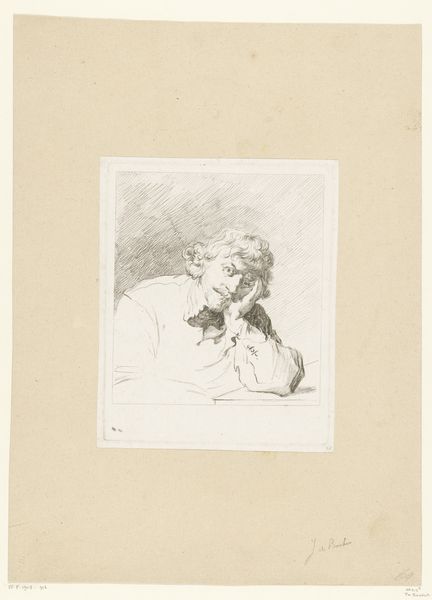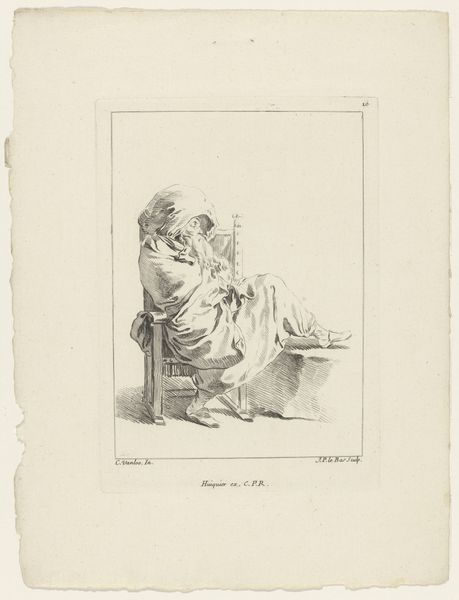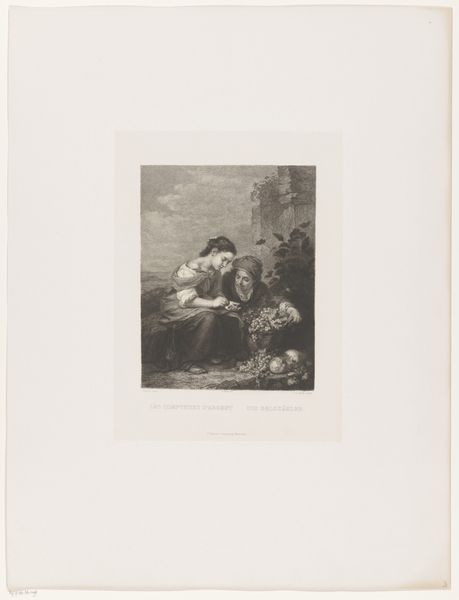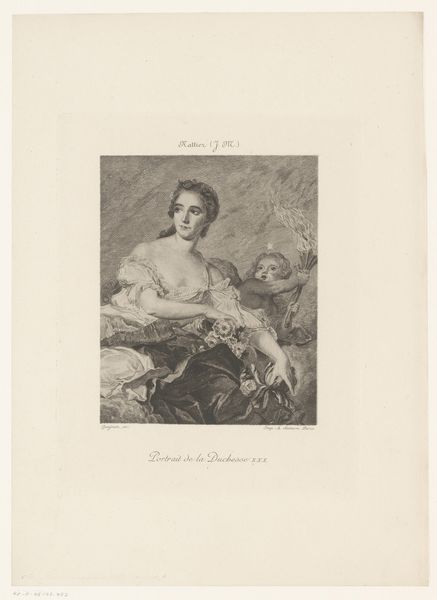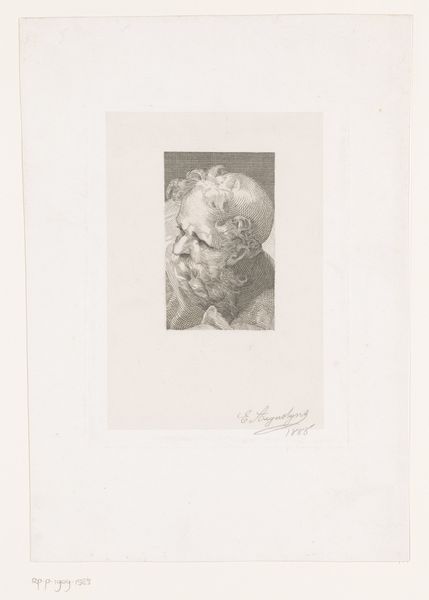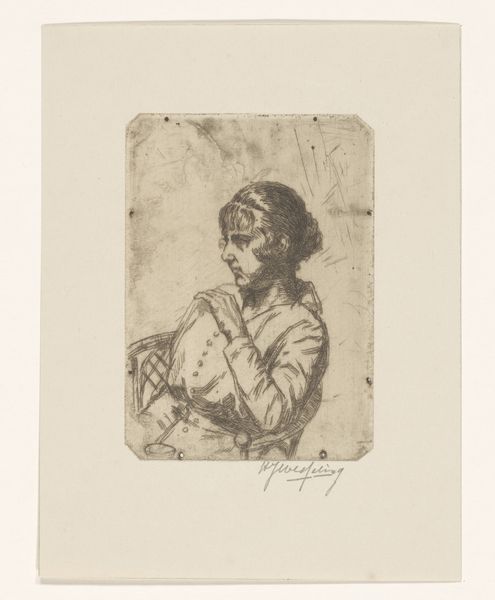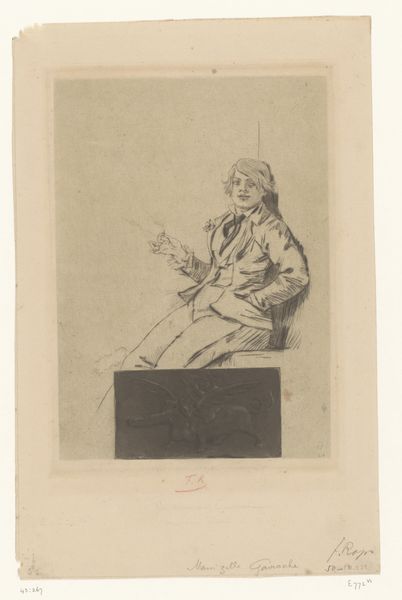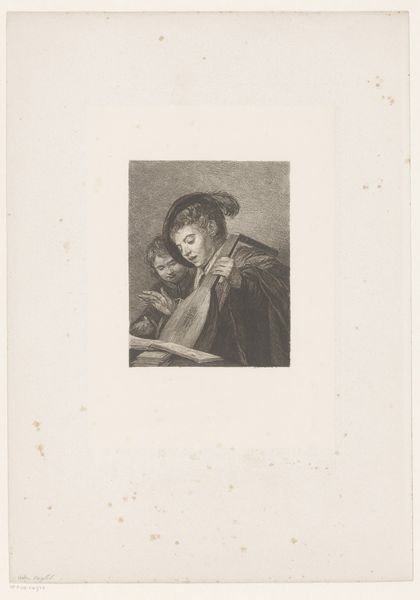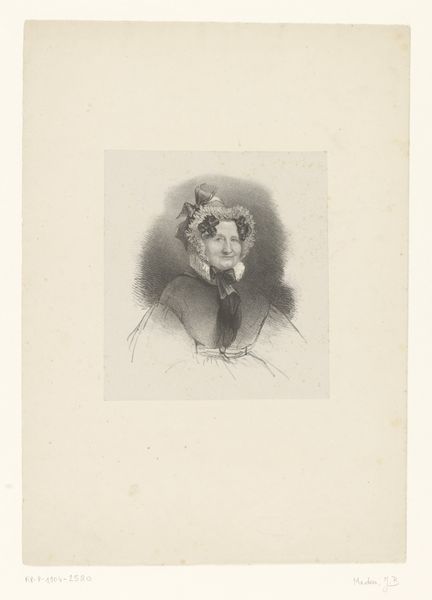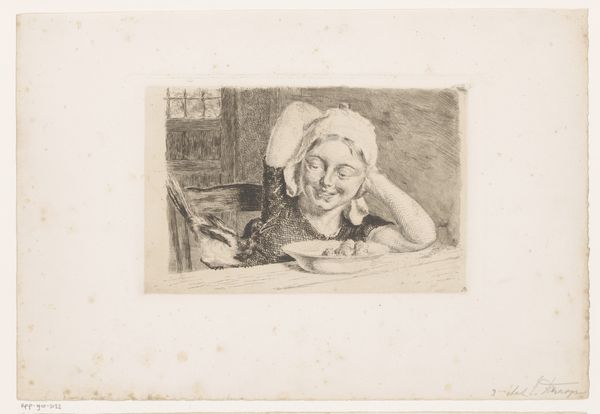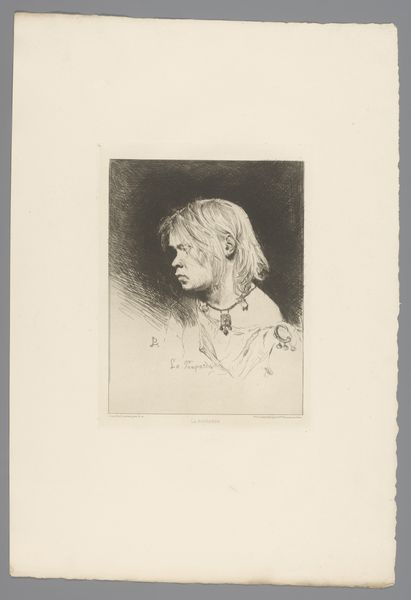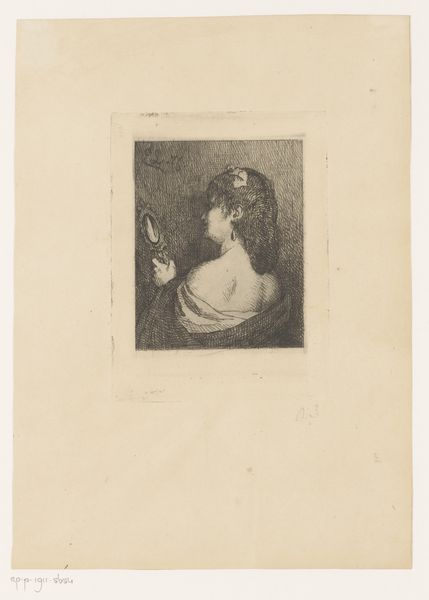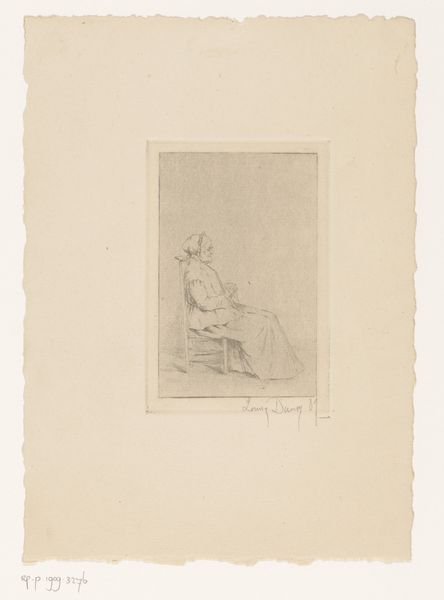
drawing, print, ink, engraving
#
portrait
#
drawing
# print
#
ink
#
engraving
Dimensions: height 203 mm, width 165 mm
Copyright: Rijks Museum: Open Domain
Curator: This is "Portret van Jacob Adriaensz. Backer", a work dating from around 1803 and currently held at the Rijksmuseum. It's a drawing, specifically an engraving in ink, created by Adam von Bartsch. Editor: The first thing that strikes me is the subject's melancholic posture. He’s resting his head heavily on his hand, almost as if burdened by something. The contrast between light and shadow adds to that sense of quiet drama. Curator: Yes, and the original would likely have been far more charged. Bartsch made the portrait over a century after Backer’s death. Consider then, the tradition of memorializing artists—or even simply well-known members of society. There's an undeniable socio-political element to these projects, even now. How we celebrate some and ignore so many more. Editor: I agree. There's also the aspect of artistic legacy itself. Backer was, after all, a painter, mostly of portraits and religious subjects during the Dutch Golden Age, a time of significant social and economic shift, by the way. I can’t help thinking of the engraving itself as a form of translation or interpretation. Not just from one medium to another, but one era into a different understanding. The work also offers an inquiry into gender dynamics as they play out historically. Think of portraiture at the time. It certainly involved questions of male gaze and how that relates to both art and social standing. Curator: Indeed, the choice to portray Backer in this way, so introspective and… perhaps even a little world-weary… what might that suggest? Even the somewhat casual dress can be a coded decision on the part of the engraver. The artist can subtly, yet effectively undermine those same ideas. We would really have to look closer to know the answer for sure. Editor: Food for thought! All of it shows how this simple engraving connects us with an artist from the distant past—a man known and then less known, his presence reshaped for a later audience and a completely different set of concerns. Curator: Exactly, and in turn we ourselves become a piece of its ever-expanding history.
Comments
No comments
Be the first to comment and join the conversation on the ultimate creative platform.
